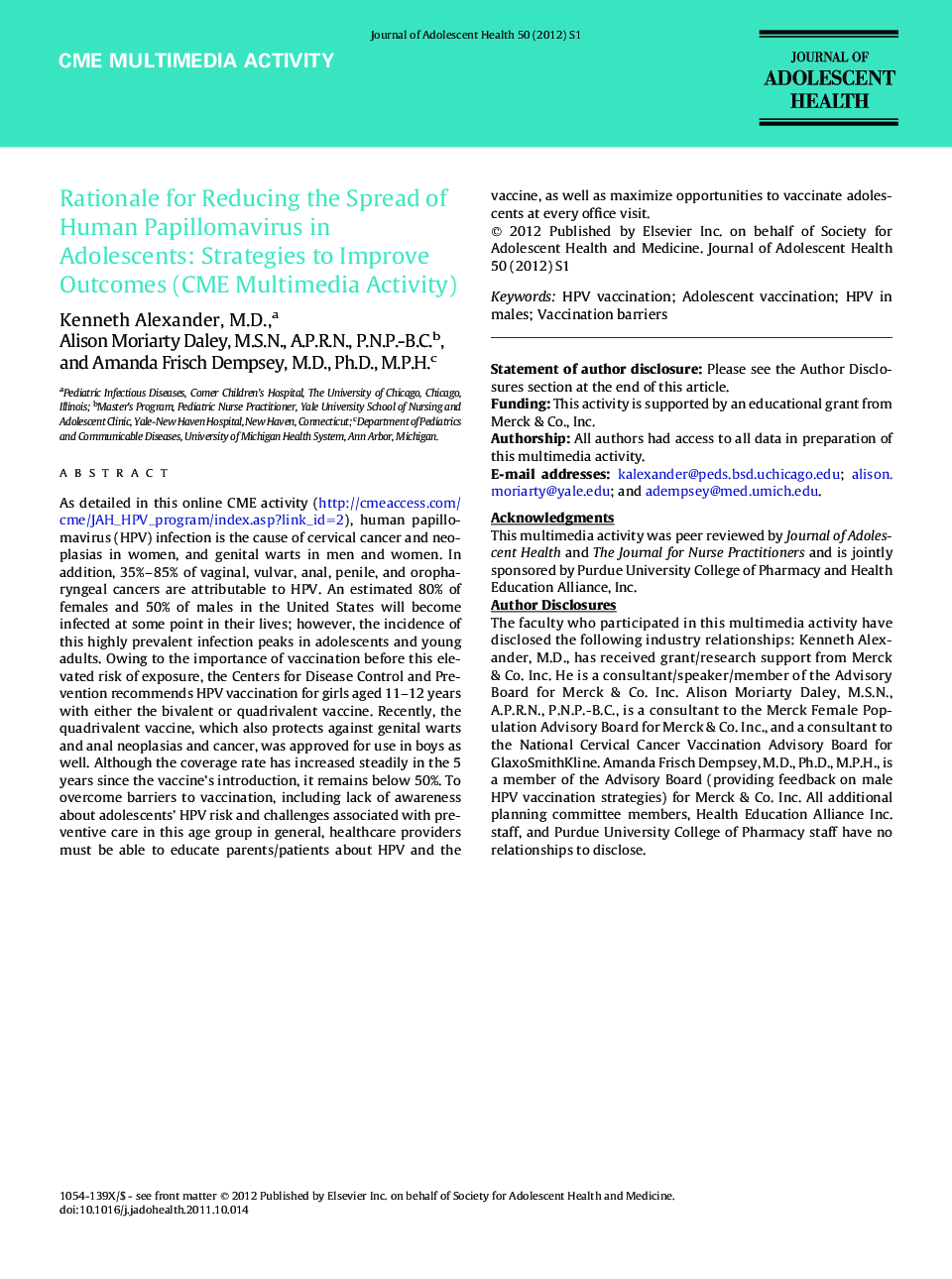| Article ID | Journal | Published Year | Pages | File Type |
|---|---|---|---|---|
| 1078749 | Journal of Adolescent Health | 2012 | 2008 Pages |
As detailed in this online CME activity (http://cmeaccess.com/cme/JAH_HPV_program/index.asp?link_id=2), human papillomavirus (HPV) infection is the cause of cervical cancer and neoplasias in women, and genital warts in men and women. In addition, 35%–85% of vaginal, vulvar, anal, penile, and oropharyngeal cancers are attributable to HPV. An estimated 80% of females and 50% of males in the United States will become infected at some point in their lives; however, the incidence of this highly prevalent infection peaks in adolescents and young adults. Owing to the importance of vaccination before this elevated risk of exposure, the Centers for Disease Control and Prevention recommends HPV vaccination for girls aged 11–12 years with either the bivalent or quadrivalent vaccine. Recently, the quadrivalent vaccine, which also protects against genital warts and anal neoplasias and cancer, was approved for use in boys as well. Although the coverage rate has increased steadily in the 5 years since the vaccine's introduction, it remains below 50%. To overcome barriers to vaccination, including lack of awareness about adolescents' HPV risk and challenges associated with preventive care in this age group in general, healthcare providers must be able to educate parents/patients about HPV and the vaccine, as well as maximize opportunities to vaccinate adolescents at every office visit.
